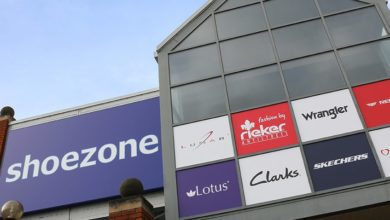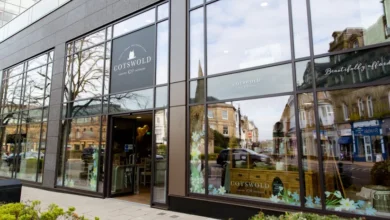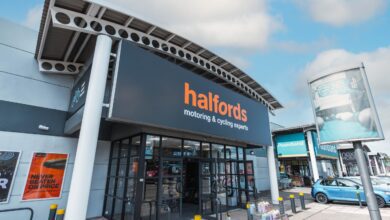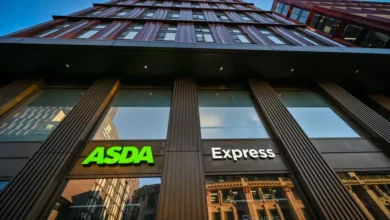What Sycamore’s $10bn WBA takeover means for the UK high street
Sycamore Partners’ $10bn (£7.4bn) takeover of Walgreens Boots Alliance signals a pivotal shift for Boots and the UK high street. Facing fierce digital disruption and shifting consumer demands, Boots must reinvent itself or risk fading into retail history amid the evolving retail-healthcare landscape
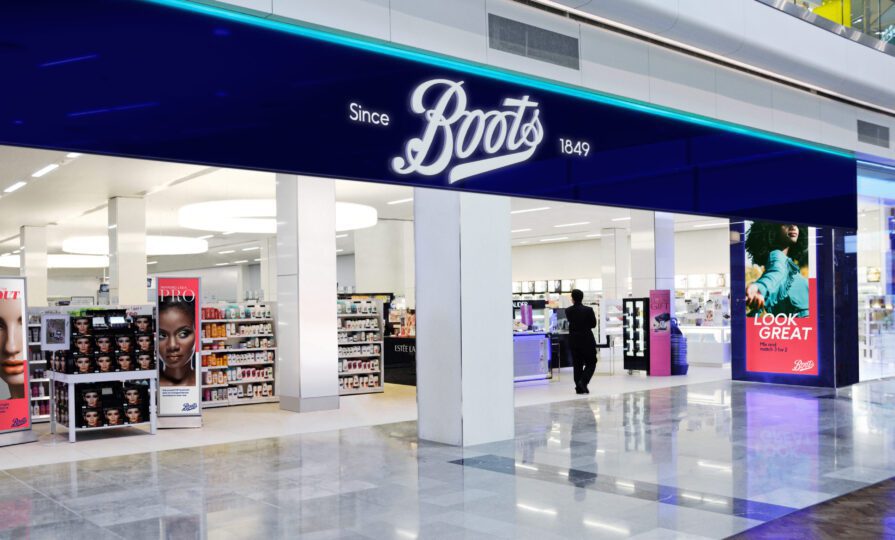
Register to get 1 more free article
Reveal the article below by registering for our email newsletter.
Want unlimited access? View Plans
Already have an account? Sign in
A $10bn (£7.4bn) takeover of Walgreens Boots Alliance (WBA) by Sycamore Partners has been officially approved, with 96% of shareholders voting in favour. This decisive vote underscores the significance of the deal, which is poised to transform a major entity at the intersection of retail and healthcare.
Expected to close in the third or fourth quarter of 2025, the agreement will take WBA private, lifting the company out of the relentless pressure of public markets. It hands Sycamore the reins to attempt a bold turnaround of a sprawling conglomerate struggling with rising competition and structural change.
This isn’t just another leveraged buyout. At around $10bn (£7.4bn), it ranks among the largest private equity deals of 2025 – one that symbolises the ongoing fusion of retail and healthcare services. At the centre is Boots, Britain’s most iconic pharmacy chain and a cornerstone of the UK high street for over 170 years.
So, what could we expect to happen next? Will Sycamore hold onto Boots and reinvent it, break it apart, or sell it off? Can Boots survive as consumer habits, digital rivals, and economic pressures reshape the retail landscape? Or is it destined to join the list of once-great brands fading into history?
The deal’s headline terms are straightforward but significant. Sycamore Partners will pay $11.45 (£8.51) per share in cash, equating to the multi-billion-dollar total. On top of that, shareholders stand to receive up to an additional $3 (£2.23) per share contingent on the monetisation of WBA’s stakes in US healthcare ventures VillageMD, Summit Health, and CityMD. At the upper end, this pushes the deal value closer to $13bn (£10bn).
Notably, shareholder support was resounding. An overwhelming 96% of all shareholders voted in favour, including 95% of unaffiliated investors, underscoring broad market consensus that change is needed.
In 2023, WBA revisited the sale but again found offers unsatisfactory. Profit warnings piled up, and more than 700 US stores faced closure, signalling deep operational challenges.
WBA’s chief executive, Tim Wentworth, framed the deal as a strategic pivot, saying, “With Sycamore’s partnership, we will be better positioned to accelerate our turnaround strategy, enhance the customer, patient and team member experience, and become the first choice for pharmacy, retail and health services.”
The alliance’s attempts to sell Boots over the last three years illustrate how much the market has shifted. Back in 2022, WBA tried to sell Boots for approximately £7bn. However, valuations were crushed by the cost-of-living crisis and ongoing uncertainty over the UK high street’s future. Rising costs, stagnant footfall, and growing digital competition were blamed for making its potential buyers wary, so the offer was ultimately rejected.
Claire Wallis, consumer goods and retail director at BearingPoint, who previously held a procurement manager role at Boots, agrees that Sycamore’s timing was critical. “There is no doubt that WBA has come under pressure to improve its financial position. The market value of WBA has dropped over 90% since its peak in 2015, leaving investors concerned about poor earnings and a lack of digital investment,” she says. “The balance sheet will look healthier after this sale given WBA’s debt load, and the changing outlook for pharmacy retail – with higher operating costs and profit pressures, especially in the US – has made this moment pivotal. Overall, Boots remained attractive by outperforming retail sales growth, making it very saleable.”
In 2023, WBA revisited the sale but again found offers unsatisfactory. Profit warnings piled up, and more than 700 US stores faced closure, signalling deep operational challenges. This was no longer a question of if Boots would be sold, but when.
Rebecca Crook, chief executive of strategic consulting group MMT Digital, highlights the financial and structural pressures at play. “WBA has struggled with financial distress and declining market performance for nearly a decade. The pharmacy sector itself is undergoing a structural shift,” she explains. “In the UK, more pharmacies are closing than opening – Community Pharmacy England’s latest survey forecasts that nearly one in six pharmacies could shut within the next year. This ongoing consolidation and market contraction added to the pressure on WBA to act.”
Meanwhile, the competitive landscape is unforgiving. Digital disruptors like Amazon Pharmacy, along with online beauty and healthcare providers like Superdrug, have fundamentally altered consumer expectations. In the lead-up to Boots’ takeover, it faced a choice to either remain public and exposed to market volatility, or go private under Sycamore to restructure away from the public eye.
Sycamore’s approach suggests a strategic play to maximise value through aggressive operational overhaul, rather than a long-term hold.
Sycamore Partners was founded in 2011 by former Golden Gate Capital veterans, Stefan Kaluzny and Peter Morrow. They built a presence managing between $10 and $15bn (£7.4bn and £11.1bn) in committed capital focused on retail and consumer brands. Importantly, Sycamore’s specialty has been distressed takeovers, carve-outs and operational overhauls.
After 14 years, Kaluzny and Morrow’s portfolio reads like a retail who’s who: Staples, Belk, Hot Topic, Talbots, and even Pure Fishing, with brands like Abu Garcia and Berkley. In 2021, Sycamore successfully spun US-based department store chain Belk back onto public markets after a multi-year turnaround, demonstrating their operational expertise. Sycamore is known for surgical restructuring: identifying undervalued assets, applying leverage, streamlining operations, and then flipping them for a profit via sale or IPO.
In that respect, WBA fits Sycamore’s profile perfectly: a sprawling, complex business with hidden value beneath operational drag. Boots in the UK, VillageMD in the US, and the rising No7 Beauty brand all present opportunities for restructuring, potential carve-outs, or targeted investment.
Sycamore’s approach suggests a strategic play to maximise value through aggressive operational overhaul, rather than a long-term hold. Industry analysts widely expect Sycamore to either spin off Boots UK as a standalone entity or sell it to another buyer.
Wallis believes the immediate priority will be transformation rather than a quick flip, saying, “Sycamore are likely to keep Boots for now, moving it into a phase of transformation – reviewing leadership, property and estate efficiencies, and investing to strengthen its healthcare standing in the UK. While Sycamore will eventually seek an exit, Boots’ scale, brand equity and healthcare dominance make it highly attractive. The risks lie in restructuring, but in this case, it could drive innovation in a strong healthcare brand that has lacked digital investment.”
Its differentiation score, which measures innovation and uniqueness, has fallen from the 50th percentile to the bottom 10% of UK brands, reflecting years of underinvestment and growing competition.
Robert Carter, founder of Your Company Formation, doesn’t think this deal signals decline for high street retail in the UK. Rather, he believes it may force necessary modernisation “if Boots leverages data and customer loyalty smartly”.
“Boots will need to double down on digital pharmacy services and e-commerce; Leverage its footprint for health-tech partnerships or click-and-collect models; and reassess store-level profitability and diversify revenue beyond traditional retail,” Carter elaborates. “Sycamore’s takeover is less about continuity and more about reimagination. Whether Boots becomes leaner, more tech-forward or ends up on the market again, will depend on how quickly it evolves with consumer needs and retail innovation.”
David Powell, global executive strategy director at Landor, echoes Carter’s assessment, highlighting No7’s distinct growth appeal. “No7 ranks three times higher than Boots on differentiation – an indicator of brand uniqueness and innovation,” he explains. “It appeals strongly to younger consumers and has fewer structural challenges linked to physical retail. With targeted investment and a wider distribution model, No7 offers the clearest path to brand-driven growth.”
Meanwhile, Powell points out that Boots itself is slipping on critical brand metrics. Its differentiation score, which measures innovation and uniqueness, has fallen from the 50th percentile to the bottom 10% of UK brands, reflecting years of underinvestment and growing competition. Add to that Superdrug’s digital push and Amazon’s looming pharmacy ambitions raising the stakes further, and that is challenging Boots to reinvent itself fast or risk irrelevance even more.
The Boots deal speaks to a broader trend: the convergence of retail and healthcare. Viktor Clintom, chief operations officer at Clintopia, observes that “pharmacies are no longer just places to buy medicine. They’re evolving into community health hubs offering convenience, basic health checks and integrated digital services”.
“Over the next two to three years, this trend will accelerate as consumers demand more convenient, tech-enabled healthcare alongside retail. This convergence also means that digital health solutions and in-store health services will become key areas of investment as the sector adapts to changing consumer behaviour and cost pressures,” Clintom adds.
Private equity’s growing appetite for consumer health assets also amplifies this trend, as the Walgreens-VillageMD partnership – which combines telehealth, urgent care and pharmacy in the US – offers a glimpse of the integrated future that could be expanded further in the UK market.
Having been trading since 1849, Boots is absolutely a heritage brand and Rebecca Crook sees signs in Sycamore’s strategy that Boots could follow the same path as Woolworths.
Boots has the footprint and expertise to be a cornerstone of this hybrid health-retail ecosystem but, as Carter pointed out earlier, only if it embraces digital transformation and invests in omnichannel services.
Having been trading since 1849, Boots is absolutely a heritage brand and Rebecca Crook sees signs in Sycamore’s strategy that Boots could follow the same path as Woolworths. She explains, “Both were trusted heritage brands and iconic on the British high street. But the same high street radically changed over the past 10 years, and consumers are no longer buying products in the same way. Woolworths couldn’t survive this change. Boots is still grappling with the challenge but has managed to reinvent itself showing remarkable resilience. The brand has achieved 14 consecutive quarters of market share growth, reversed customer satisfaction declines, and successfully modernised with digital innovation – all an impressive achievement.”
Despite its many wins in recent years, David Powell warns of the dangers of complacency, saying, “Boots’ biggest risk is brand fatigue. Despite strong awareness and affection, years of underinvestment have eroded its uniqueness and innovation. Without decisive reinvention, the brand risks losing further ground.”
Boots is at a crossroads. It could remain with Sycamore, digitally focused on health-tech and omnichannel pharmacy, shedding legacy costs. Alternatively, it might break up, spinning off Boots UK or No7 Beauty for independent growth. Urgency demands accelerated investment in e-pharmacy, click-and-collect, and data-driven healthcare, with digital being key. This extends beyond Boots to the UK high street, which must evolve into hybrid health hubs. Can Boots reinvent itself or face obsolescence?
Carter’s takeaway lesson for other retailers is that this deal is significant to the ecosystem of the British high street. And if the British high street is to maintain its legacy retailers, he says they must “adapt rapidly, embracing digital health, rethinking physical footprints and innovating customer experiences to remain relevant”.


